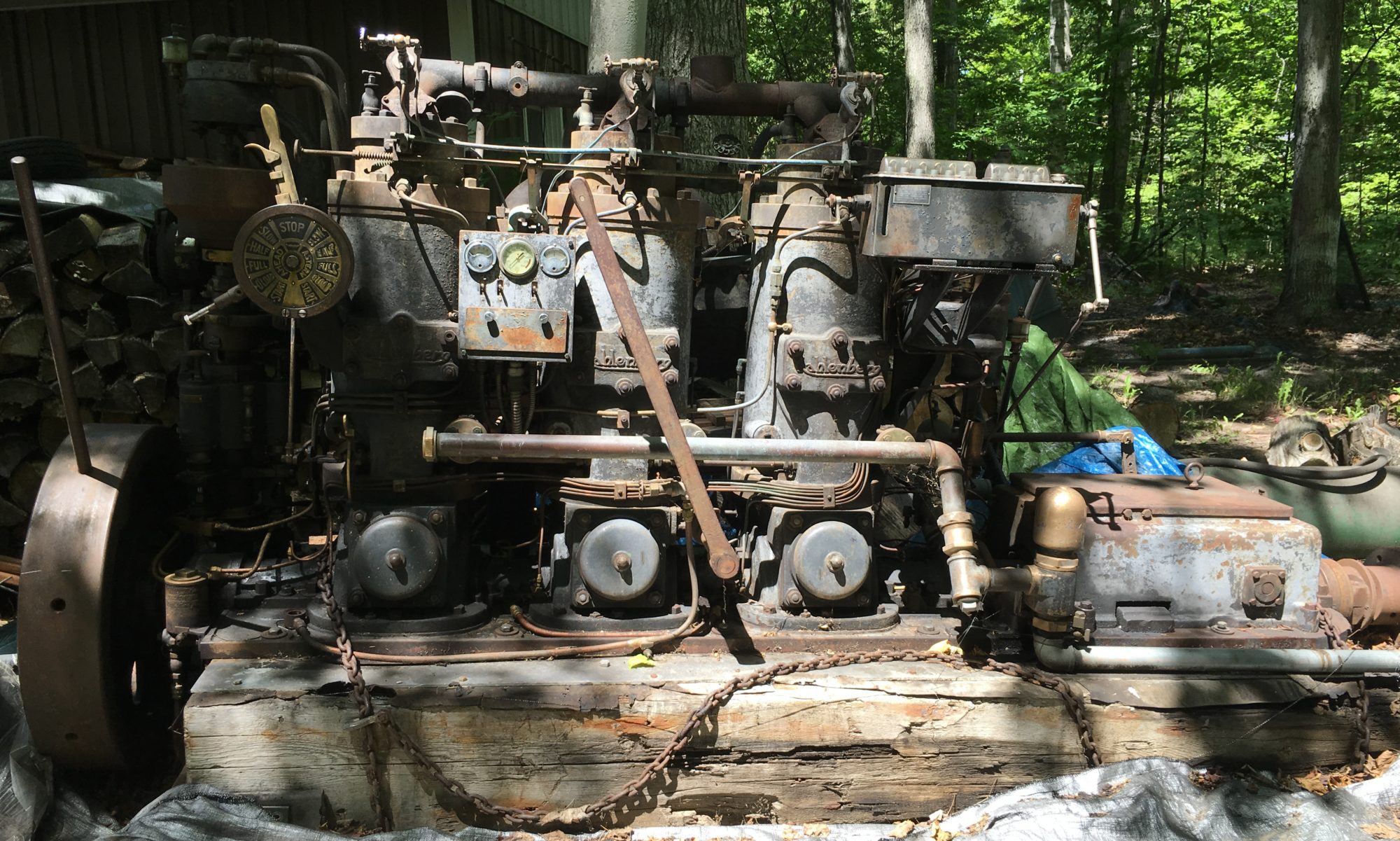It’s been a lot of fun to figure out what everything is on the engine, particularly the little details. Lots of clever engineering. But I’ve been stumped by this one:


It protrudes into each crankcase above and a bit offset starboard from the crankshaft. Not shown is a jamb nut.

I’m sure there will be some old-timers who will see this and immediately say ‘you dummy, of course that’s the …. ‘. But I couldn’t figure it out. It didn’t touch the crankshaft. It couldn’t be anything electrical. Obviously deliberately offset with the ability to position as desired. It took a buddy coming over to have a couple beers in the shop to figure it out. By rotating the crankshaft he recognized that the piston nearly touched the brass “probe” at its lowest travel point. The outside bass rod is shaped like a whistle but it appeared to be solid inside. Then the light came on. It has to be a whistle.
Some may frown at this but I was curious. I could not resist the temptation to prove it. I rotated the “probe” (I still don’t know what it’s called) so the pin was at the top. Then I rotated the crankshaft and sure enough it sheared off the inside pin leaving a hollow body. Normally the inside brass rod is adjusted so it just barely clears the piston. If there was significant wear in the rod bearing there would be additional travel in the piston and it would shear off the inside pin. The outside brass pin that has the whistle cut is actually a tube with another pin pressed inside. That inside pin has a small beveled edge so air (crankcase pressure) could pass through and alert the operator of a problem before a catastrophic failure. I tried it with compressed air and the whistle is loud!
A brilliant and simple solution to an engineering challenge.

I have not seen this feature on the other Kahlenbergs I’ve looked at and it isn’t in my parts diagrams nor referenced in my copy of the operating manual. The crankcase is cast with provision for this specific mount point so it obviously came from the factory this way. Perhaps it was an option or something found on earlier engines (mine was made in 1946, not exactly early but about midway through the manufacturing life). The one I tested likely would not have worked because the internal hollow body was packed with corrosion and crud. That may be why I haven’t seen others.
I will remake the inside brass piece by threading and counter-sinking a 3/8″ brass rod.












